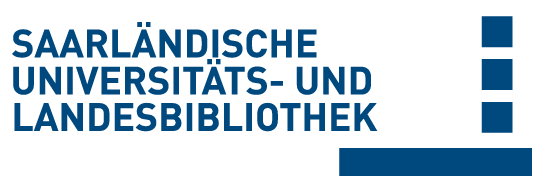Please use this identifier to cite or link to this item:
doi:10.22028/D291-46267 | Title: | Proteoid biodynamers and cell-penetrating peptide conjugates as tools to overcome the gram-negative bacterial cell envelope |
| Author(s): | Kamal, Mohamed Ashraf Mostafa |
| Language: | English |
| Year of Publication: | 2025 |
| Free key words: | Bacteria Gram-negative Biodynamers Peptide Conjugates Antibiotics Antibacterial Anti-infective Antiinfective |
| DDC notations: | 540 Chemistry 570 Life sciences, biology 610 Medicine and health |
| Publikation type: | Dissertation |
| Abstract: | The Bacterial cell envelope, especially for Gram-negatives, serves as a major defense mechanism against antibiotics. It is composed of lipopolysaccharides, lipid bilayer, periplasm, and another lipid bilayer, which combine to restrict most molecules to reach their intracellular targets by diffusion. Such restriction represents a bottleneck for the antibiotics pipeline. Cationic dynamic polymers allow interactions with the LPS layer. My studies reveal that ArgBD, an arginine-based biopolymer, interacts specifically with the lipid A component of the LPS, creating gaps in the existing LPS barrier. Resultingly, ArgBD can potentiate colistin 32-fold by accessibility to the lipid bilayer in a novel mechanism. In order to further improve this effect of ArgBD alone, it was conjugated to the cell-penetrating peptide HIV-1 TAT to additionally interact with the lipid bilayers of the bacterial envelope. This covalent conjugate, TAT-ArgBD, could indeed improve bacterial killing with a membranolytic index of >64 and less hemolytic toxicity than colistin at the same xMIC. When combing TAT-ArgBD with various antibiotics, namely novobiocin, chloramphenicol, and imipenem, an up to 256-fold synergy was observed. Interestingly enough, the activity of novobiocin, which is notoriously restricted to Gram-positive bacteria, could also be expanded to include Gram-negatives. Die bakterielle Zellhülle, insbesondere bei Gram-negativen Bakterien, dient als wichtiger Abwehrmechanismus gegen Antibiotika. Sie besteht aus Lipopolysacchariden, einer Lipiddoppelschicht, dem Periplasma und einer weiteren Lipiddoppelschicht, die zusammen verhindern, dass die meisten Moleküle per Diffusion ihre intrazellulären Zielstrukturen erreichen. Diese Barriere stellt einen Flaschenhals für die Entwicklung neuer Antibiotika dar. Kationische, dynamische Polymere ermöglichen Interaktionen mit der LPS-Schicht. Meine Studien zeigen, dass ArgBD, ein argininbasiertes Biopolymer, spezifisch mit der Lipid-A-Komponente der LPS interagiert und dabei Lücken in der bestehenden LPS-Barriere erzeugt. Folglich kann ArgBD Colistin durch einen neuartigen Mechanismus um den Faktor 32 verstärken, indem es den Zugang zur Lipiddoppelschicht ermöglicht. Um diesen Effekt von ArgBD weiter zu verbessern, wurde es an das zellpenetrierende Peptid HIV-1 TAT konjugiert, um zusätzlich mit den Lipiddoppelschichten der bakteriellen Hülle zu interagieren. Dieses kovalente Konjugat, TAT-ArgBD, verbesserte tatsächlich die bakterizide Wirkung mit einem membranolytischen Index von > 64 und geringeren hämolytischen Toxizitäten als Colistin bei gleichem Vielfachen der minimalen Hemmkonzentration. Bei Kombination von TAT-ArgBD mit verschiedenen Antibiotika—namentlich Novobiocin, Chloramphenicol und Imipenem—wurde eine Synergie von bis zu 256-fach beobachtet. Interessanterweise konnte durch diese Kombination auch die Aktivität von Novobiocin, das üblicherweise nur gegen Gram-positive Bakterien wirkt, auf Gram-negative ausgeweitet werden. |
| Link to this record: | urn:nbn:de:bsz:291--ds-462677 hdl:20.500.11880/40575 http://dx.doi.org/10.22028/D291-46267 |
| Series name: | Dissertationen aus der Naturwissenschaftlich- Technischen Fakultät I der Universität des Saarlandes |
| Advisor: | Lehr, Claus-Michael |
| Date of oral examination: | 4-Sep-2025 |
| Date of registration: | 17-Sep-2025 |
| Description of the related object: | Original Publications |
| Related object: | https://doi.org/10.1016/j.ejpb.2024.114336, https://doi.org/10.1002/adfm.202304370 |
| Faculty: | NT - Naturwissenschaftlich- Technische Fakultät |
| Department: | NT - Pharmazie |
| Professorship: | NT - Prof. Dr. Claus-Michael Lehr |
| Collections: | SciDok - Der Wissenschaftsserver der Universität des Saarlandes |
Files for this record:
| File | Description | Size | Format | |
|---|---|---|---|---|
| 20250916_Mohamed Kamal_PhD Thesis.pdf | 24,43 MB | Adobe PDF | View/Open |
Items in SciDok are protected by copyright, with all rights reserved, unless otherwise indicated.

